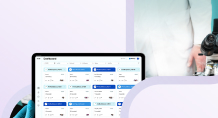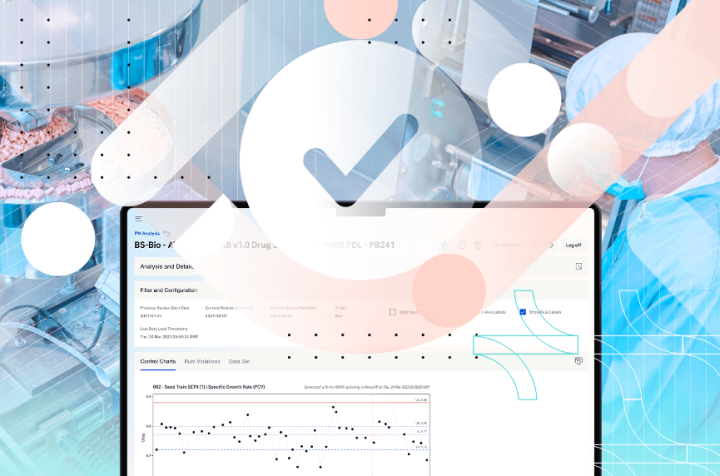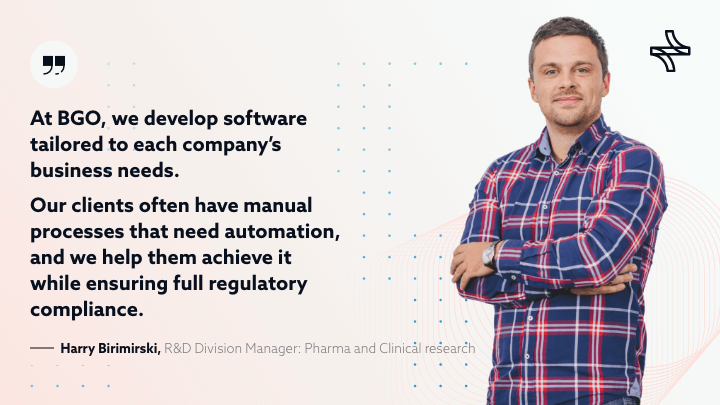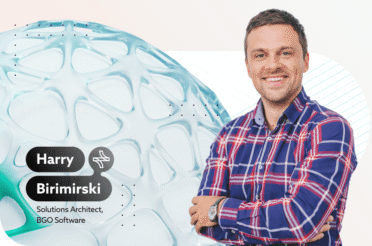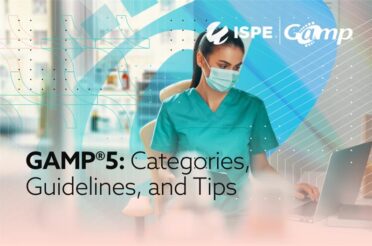In the modern-day pharmaceutical industry maintaining high-quality standards is paramount. The global demand for medications increases and companies face a growing need to uphold rigorous manufacturing practices.
In other words – it is not enough to perfectly develop a new drug once. The dynamic landscape requires consistent delivery of products that meet stringent quality specifications. Every day the manufacturing of pharmaceutical products must be overseen and controlled.
This means that an integral part of this industry is the implementation of robust systems for monitoring and controlling manufacturing processes. Such systems are the continued process verification (CPV) systems.
In this article we ask our expert on CPV systems – Harry Birimirski, to explain the role and importance of these systems in the pharmaceutical industry.
What is continued process verification (CPV)
Continued Process Verification (CPV) is the third stage in the process validation lifecycle of manufacturing. The first step is the development of the process. Next is the process verification.
In essence, it offers ongoing monitoring and control. Overall, CPV focuses on collecting, analyzing, and interpreting data in real-time or periodically to confirm that a process consistently produces a product that meets quality specifications.
It is important to know the difference between a monitoring system and CPV, our expert says. Sometimes it is hard to differentiate them, however, they have basic differences in their scope, purpose, and application. CPV systems are lifecycle-focused while monitoring systems are batch or purpose-focused. This means that the firsts have a broader framework.
Moreover, CPV systems are designed for continuous improvement by identifying parameters like, for example, trends. Basic monitoring tools allow immediate control and corrective actions for operational safety. An important part of CPVs is the support of regulatory compliance while monitoring only supports operational efficiency.
CPV systems are particularly applicable in huge pharmaceutical companies with complex manufacturing operations that require automatization of the processes. However, every company in the field may benefit from such a system as ongoing monitoring and analysis of the manufacturing process report is a crucial part of compliance with Good Manufacturing Practices (GMP).
When you manufacture different products with complex process steps in remote locations, it is important to automate the process of monitoring and analysis.
-Harry Birimirski
Management of different attributes may be challenging. There are many types of monitoring parameters – some of them are mandatory, and some of them are optional. For example, a Key Performance Indicator (KPI) is an obligatory measurable value for efficiency. KPIs can be monitored and evaluated as part of a CPV system which makes this type of system a must-have for the company.
What is the CPV’s main purpose?
One of the most important aims of CPV is the prevention of production loss due to manufacturing mistakes. By continuous monitoring, such errors can be identified in time to be corrected. It is also important that the specific misstep or inaccuracy can be located – it can be part of the process, equipment, environment, etc.
CPV systems identify and show even the possible future problems. For example, they can show a trend for increasing the pH of the environment even though it remains within acceptable limits. This leads the monitoring team to the conclusion that a product error may arise. This is called Out-of-Trend (OOT). It is usually used to describe and identify early signals of potential issues that might lead to process deviations.
Moreover, the statistics in CPV can be carried out in the first stages of production where little mistakes cost less. These and many more benefits make the use of such systems crucial to ensure quality control in the pharmaceutical industry.
Regulatory framework and requirements
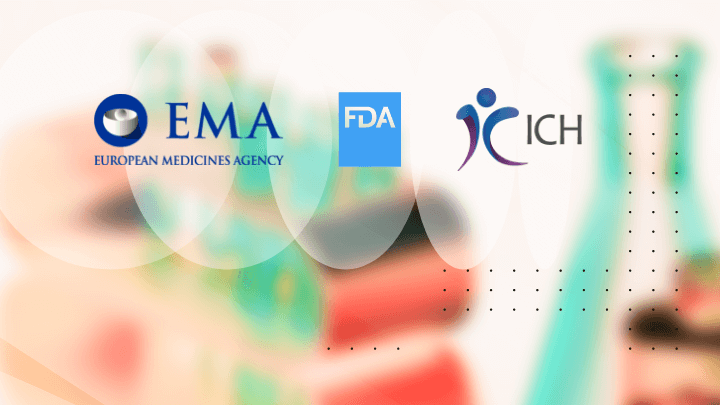
The regulatory framework and requirements for continued process verification systems are shaped by international guidelines and standards just like any other system involved in healthcare. CPV is mandated as part of the process validation lifecycle by regulatory authorities such as the FDA, EMA, and ICH.
According to the U.S. Food and Drug Administration (FDA), CPV is defined as Stage 3 of the process validation lifecycle. FDA requires that the manufacturers must continuously monitor and analyze production data to confirm that processes remain in a state of control.
The International Council for Harmonisation of Technical Requirements for Pharmaceuticals for Human Use (ICH) has a number of legal documents regarding CPV.
Its requirements in the guidelines are:
- ICH Q8 emphasizes that the design space and critical process parameters (CPPs) are a part of quality by design (QbD);
- ICH Q9 introduces a risk-management approach to identify and mitigate risks to product quality;
- ICH Q10 establishes a pharmaceutical quality system (PQS) that integrates CPV as a mechanism for continuous improvement.
European Medicines Agency (EMA) has a Guideline on Process Validation for Finished Products. According to this document, CPV is mandatory for lifecycle management and should demonstrate ongoing process control and consistency. Product quality should be protected through real-time monitoring, data collection, and trend analysis.
The Good Manufacturing Practices (GMP) Guidelines that are mentioned above also mention CPV as a mandatory part of the process of pharmaceutical manufacturing.
To summarise, the regulatory framework for CPV systems underlines their importance in maintaining product quality. It is noticeable that they are an integral part of the business that has strict compliance with legal requirements.
How to design your CPV strategy
The efficient design of the CPV system and its flawless integration into the work process are the core of its implementation and use. A well-thought-out CPV strategy integrates data-driven monitoring, risk management, and continuous improvement principles.
First, you need to understand the regulatory requirements. Guidelines such as FDA’s Process Validation Guidance, ICH Q8-Q10, and EMA’s Process Validation Guideline are the backbone of the pharmaceutical law in this field. Needless to say, your CPV strategy must align with GMPs.
Second, you should define the scope of CPV. All of the processes and equipment should be identified and included in the design. Also, you should determine different strategies for basic products and high-risk ones.
Then, the CPV system should obtain clear aims and objectives. You should also consider key data sources no matter whether they are real-time data, lab results, or stability studies.
The next step is to develop a data collection plan. This means that you should define how and when the data will be collected. These considerations vary by the data type. It is helpful to consider integration with existing systems, such as LIMS (Laboratory Information Management System) or ERP (Enterprise Resource Planning) systems.
Another step is to implement statistical tools. You can use statistical process control (SPC), control charts, and other analytical tools to detect trends, deviations, and out-of-trend results. Last but not least, think about the risks. Focus on high-risk products, enhance monitoring, and create an escalation plan.
While this process sounds difficult to complete, there are professional teams that can align the CPV system with your manufacturer.
Our expert points out that the conditions in the pharmaceutical industry are severe. Many processes, such as data verification, are needed to comply with the standards. This is why implementing a well-designed CPV strategy from an established developer is very important.
What can a CPV system do?
Continuous process verification systems have many functionalities that ease the pharmaceutical processes. In this article we mention some of them.
Data Collection and Monitoring
Collection and data verification are maybe the biggest challenges in CPV systems development. Effective data collection and monitoring provide the foundation for the most important features of the software – identifying trends, detecting variability, and implementing continuous improvement measures.
There are several key data sources in continuous process verification. Critical Process Parameters (CPPs) are the parameters that directly affect product quality. Any variability in them can cause an effect on the product’s potency, stability, or purity. Examples of CPPs are: temperature, pH, and pressure.
Critical Quality Attributes (CQAs) are the attributes related to product safety, efficacy, and performance. These attributes are essential for meeting the predefined standards. CQAs are the purity, potency, and stability of the drug product.
Other variables that are monitored are environmental factors (e.g., humidity) and batch records from each production. Data from in-process and finished product testing can also be collected.
Data can be collected manually or automatically. An automated system for data collection is the Process Analytical Technology (PAT). It allows real-time monitoring of critical parameters. Another system is the Supervisory Control and Data Acquisition (SCADA). It receives automated data acquisition from equipment and sensors. The last important method is the Manufacturing Execution System (MES). It enables the integration of production and quality data.
The challenges in data collection begins with the different sites of data. For example, a piece of information can be in one database and another can be somewhere else. The first challenge is to identify the necessary data. Then, you have to execute data cleaning for the unimportant information. After that, every piece of data should be All of the steps should be documented, our expert reminds us.
Here comes the question – how frequently the data should be collected? Critical processes, such as fermentation or sterilization, must have continuous or near-real-time collection. In the pharmaceutical scope, near-to-real-time collection is enough because of the periodicity of the production. Processes with slower changes should be assessed periodically through stability studies.
Monitoring in CPV detects trends or deviations that could indicate process instability or drift. This provides early warning signals to prevent OOT bad outcomes. Statistical tools to track process performance and detect out-of-trend (OOT) results are the control charts. Another tool is the Statistical Process Control (SPC). It is a group of techniques for analyzing variability and process capability.
Predictive analysis is important to predict potential deviations. It uses advanced models that work with historical data. Alarm systems are a crucial part to alert for real-time parameter deviations.
Statistical Analysis and Trending
Statistical analysis in CPV involves using mathematical and computational tools to assess process data. Moreover, advanced software uses statistical analysis algorithms that predict potential issues. They are based on historical data. This means that the more data from the past you have, the better the analysis will be.
The Six Sigma methodology is frequently used in this field as it measures the difference between the real process and the perfect process. You can put concrete parameter ranges for the different variables. The Six Sigma algorithm significantly reduces defects and thus has high reliability. Nevertheless, such an algorithm can represent data in chart models.
Trends are an important part of CPV systems. It complements statistical analysis by providing a dynamic view of process performance. Trend evaluation can differentiate between random variability and meaningful changes.
Insights from statistical analysis and trending can be used to optimize the work processes. Also, they are the basis for updating control strategies in order to improve process understanding.
Risk assessment and management
Continued process verification consists of a lot of components, two of which are risk assessment and risk management. Risk assessment in CPV evaluates the likelihood and impact of variations in manufacturing processes. In other words, it relies on identifying, analyzing, and evaluating risks.
Identification of the risks is a step in defining CQAs and CPPs and consideration of other variabilities – equipment, materials, and human factors. Analysis and evaluation of the risks require statistical tools and control measures.
CPV systems enable not only risk assessment but also risk management. Management involves implementing strategies to reduce, control, or eliminate identified risks. Automatization of the processes is an excellent way to reduce human error and prevent failures. This also ensures product quality and thus patient safety.
Process monitoring technologies
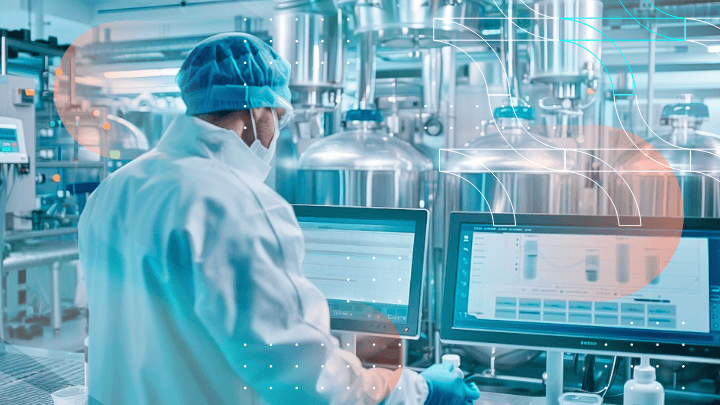
Commonly, different tools in different monitoring technologies are used for completing specific tasks. With PAT we can use, for example, spectroscopy for analyzing material composition. Other tools are chromatography, used for determination of purity, and Multivariate Data Analysis (MVDA) tools for complex analyses in real-time.
SCADA systems are mostly used for centralized monitoring of the processes. This technology however monitors only equipment and the environment and does not check the product quality.
MES software ensures the traceability of information. This means that it is the tool that documents every step of manufacturing – from the raw material to the finished product. MES also allows compliance with GMP.
Of course, no monitoring system can work without sensors. Inline sensors are located directly in the production line. They measure parameters such as pH, temperature, and pressure. Online sensors analyze a sample removed from the process in real time.
Atline sensors measure variables in the production line but are not directly integrated into the process. A sample is taken from the line and it is transported to the sensor. This type of measuring is beneficial for determining active pharmaceutical ingredient (API) concentration, dissolution rates, etc.
Documentation and reporting
Regulatory compliance and decision-making mainly rely on documentation of every process in the manufacture. CPV has to ensure that the collected data is accurate, complete, and unaltered.
Then, CPV uses this data in standardized templates. This ensures easier interpretation and compliance. Moreover, the templates may include visual data, such as tables and charts. Graphical tools help understand complex data at a glance.
The best part about CPV reporting is that it can be done completely automatically. Generating real-time and periodic reports without human work increases efficiency and reduces errors. Nevertheless, the software can give detailed reports for regulatory authorities with summarized CPV data.
Integration with quality management systems (QMS)
CPV complements Quality Management Systems (QMSs) in order to receive consistent product quality. QMS contains information about legal adherence requirements, processes in the manufacture, Standard Operating Procedures (SOP), and others.
Sometimes CPV systems have to be integrated with already established systems and processes. An example given by our expert is that the client may have a semiautomated system. This means that the CPV software will receive data in a table view. Therefore, this data should be formatted and only after that it can be presented in a specific layout with graphics.
This example shows that your CPV provider should perfectly tailor the system to the already existing business. This will allow flawless adherence to guidelines for product quality and safety.
Training and competency development
Integration of new systems leads to the need to train the workers. In this case, personnel must be familiar with regulatory requirements such as GMP. Also, they should know SOPs and get to know the new CPV system.
We provide training materials such as step-by-step work algorithms and role explanations when introducing the new system. The personnel must get familiar with them and sometimes their knowledge is tested before giving them access.
– Harry Birimirski
Competency is crucial for smooth work and seamless integration of the CPV system. Onboarding programs for foundational training on the CPV basis are just the beginning. It is important to facilitate role-based training. This means that the different positions have different required knowledge. For example, quality analysts’ training is focused on data interpretation, trending, and compliance reporting.
Hands-on training is a must. Practical sessions help stimulate the decision-making processes. They could also demonstrate handling an OOT situation.
Periodic refreshment courses and tests are beneficial for working people. Ongoing education is applicable in cases of advancement and improvement of the software.
Integration of quality by design (QbD) principles
Quality by design (QbD) is an approach to product and process understanding. Its aim is to ensure that the product quality is built from the outset and does not rely solely on end-product testing.
Important for the QbD is the definition of Quality Target Product Profile (QTPP). QTTP summarizes the product’s specifications such as purity, stability, and efficacy. CQAs and CPPs are also taken into account in the quality by design approach.
Our expert explained that CPV’s value is in ensuring that the quality of the product is good even during the manufacturing process before it is completed. The basis of this is the GMP requirements. Continuous process verification ensures ongoing compliance and improvement. Moreover, quality is guaranteed through real-time validation and adjustment of processes across the product lifecycle.
Lifecycle management of CPV programs
The lifecycle management of CPV allows processes to remain in control and comply with regulatory standards.
It involves three key stages:
- The first is the Process design, where critical process parameters and quality attributes are established.
- Then comes the Process qualification, which validates the process under commercial conditions.
- The last one is the Continued Process Verification, where real-time monitoring ensures consistent quality and highlights areas for improvement.
This approach integrates data analysis with statistical trending to monitor and refine processes. Effective lifecycle management enhances product quality. Moreover, it fosters operational efficiency by proactively addressing risks and adapting to changes in regulatory requirements or market needs.
Cross-functional collaboration
Cross-functional collaboration is a modern-day approach of a cooperative effort of individuals or teams from different departments towards a shared goal. It encourages the integration of diverse perspectives which leads to more innovative solutions and efficient problem-solving.
In the case of CPV systems, professionals from manufacturing, quality assurance, data analytics, and engineering collaborate to monitor pharmaceutical processes. Everyone’s expertise is crucial for continuous improvement.
Needless to say, in CPV the user interface plays a significant role. It provides a user-friendly platform for experts and engineers to collaborate with each other. A well-designed UI ensures efficient navigation which leads to less miscommunication and smooth operations.
Trends and Technologies
In this, as well as in any other health field, technologies are rapidly improving the workflow. Machine learning techniques are already in use in some systems but remain to be implemented in CPV.
There is a regulation about artificial intelligence output in CPV. This is specified in the GAMP (Good Automated Manufacturing Practice) guidelines. Recently, they were updated to be more liberal towards AI contribution in CPV systems. In the future, such technologies will be approved to not only meet regulatory requirements but also to ensure continuous improvement across the manufacturing process.
In conclusion, Continued Process Verification systems are vital for ensuring the consistent quality and reliability of pharmaceutical processes. Designing the system is a challenge but it is worth it for maintaining high standards and constant improvement.
Sources




